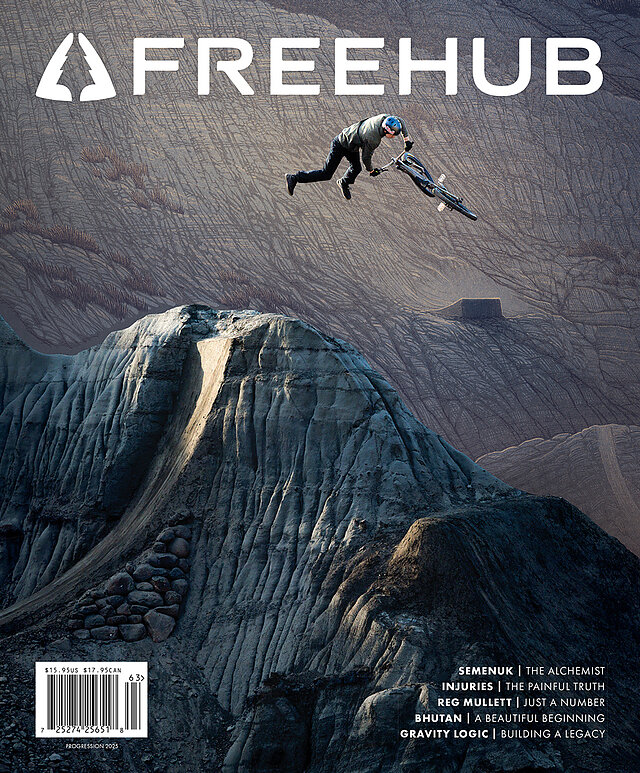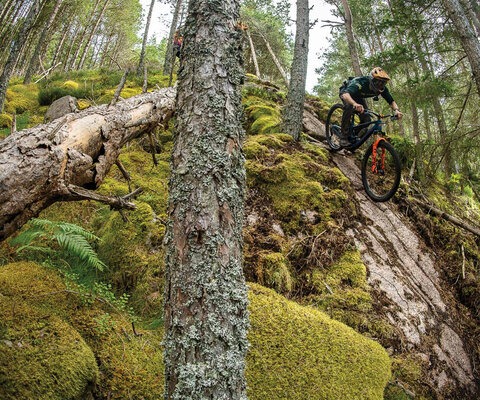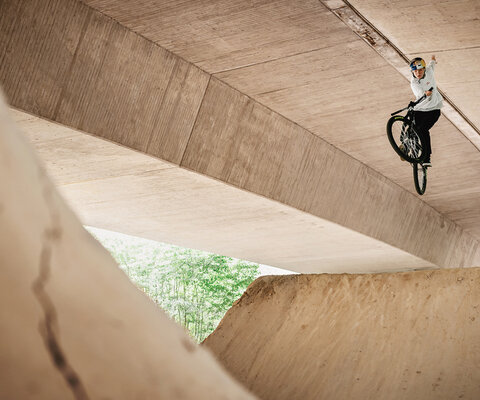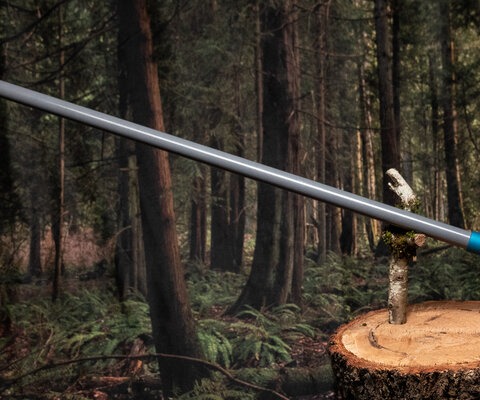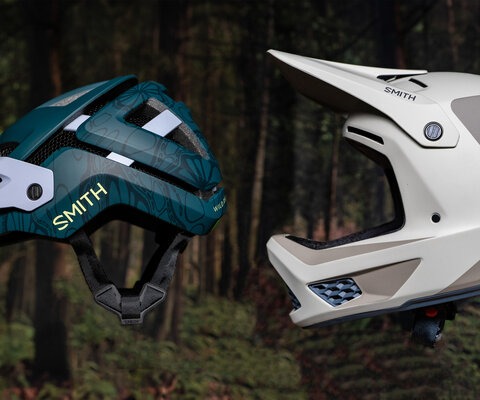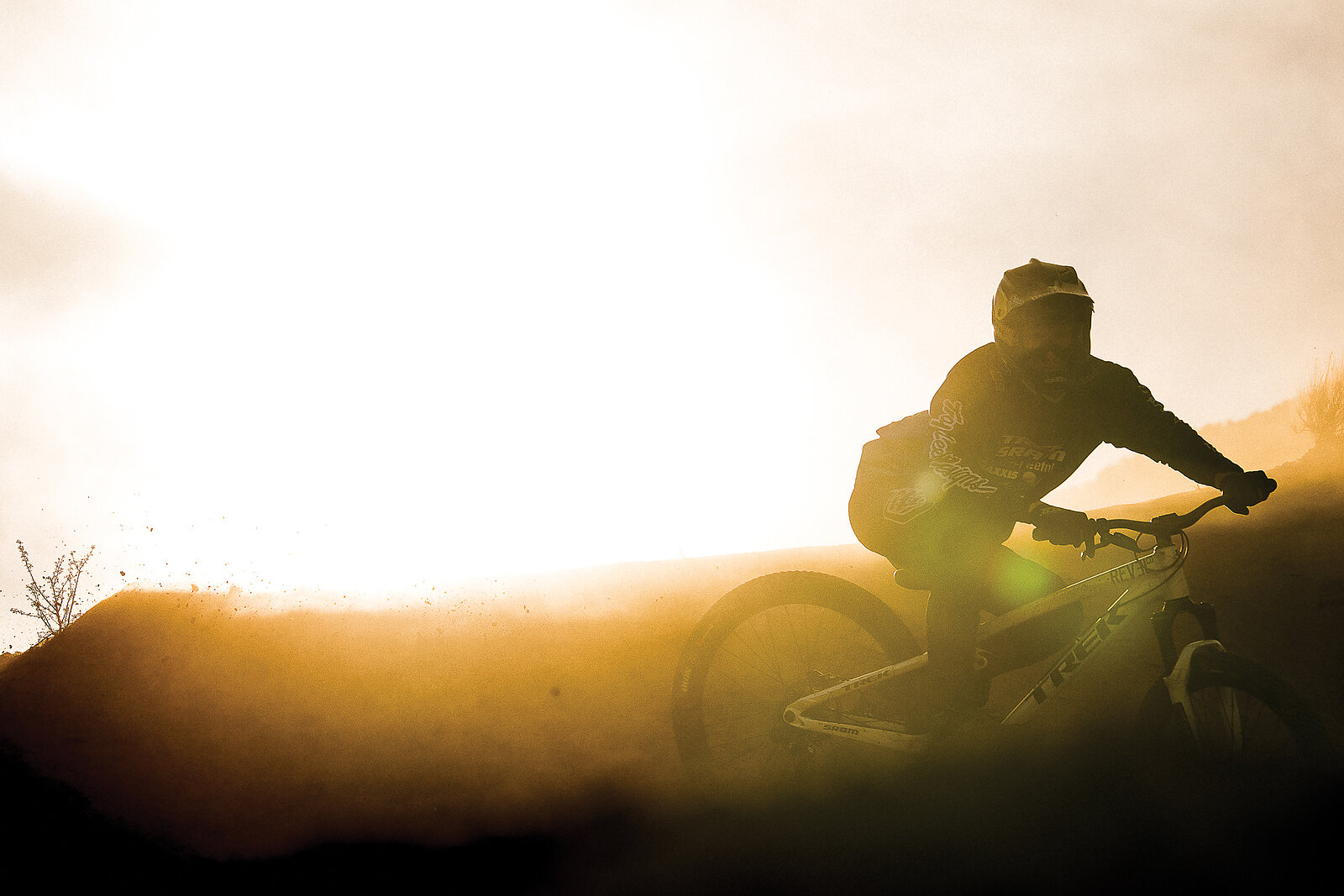
The Alchemist Brandon Semenuk's Esoteric Elixir for Greatness
Words by Brice Minnigh
Proclaiming a G.O.A.T. in any sport is usually a contentious prospect. It typically sparks heated debates over such minutiae as weight classes, differing disciplines, or even the evolutionary leaps between a sport’s defining eras. This is no longer the case with mountain biking. At this point in our history, there is little question over who the Greatest of All Time is. It’s Brandon Semenuk.
Ask any pro, regardless of whether they’re a freerider, a slopestyler, a downhiller, an enduro ripper, or even a cross-country elite, and they’ll invariably say the same thing. Semenuk is not only the planet’s most versatile, progressive rider, but he’s made the biggest impact on the global perception of mountain biking—both with the core riding community and mainstream audiences.
The Canadian’s competitive accomplishments in freeride and slopestyle are unparalleled. He’s won Red Bull Joyride, slopestyle’s most hallowed contest and the crowning event of the annual Crankworx Whistler festival, a record five times (while placing second once and third twice)—far more than any other athlete. In seven years of traveling around the world to compete in the Freeride Mountain Bike (FMB) World Tour, he’s won the overall series championship three times. And when it comes to freeriding’s pinnacle event, Red Bull Rampage—the most death-defying spectacle in all of mountain biking—Semenuk sits in a category of his own with another record five victories.
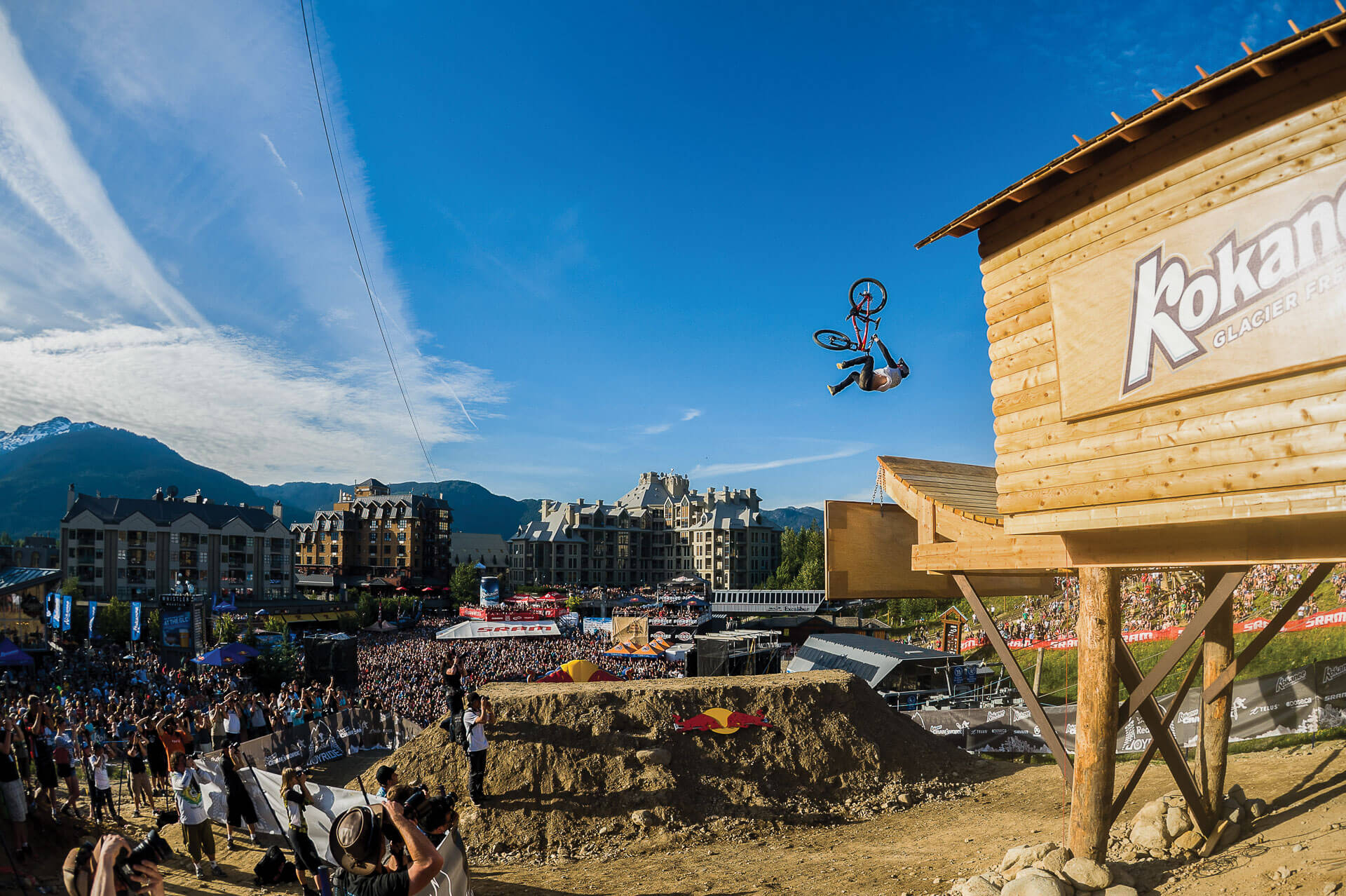
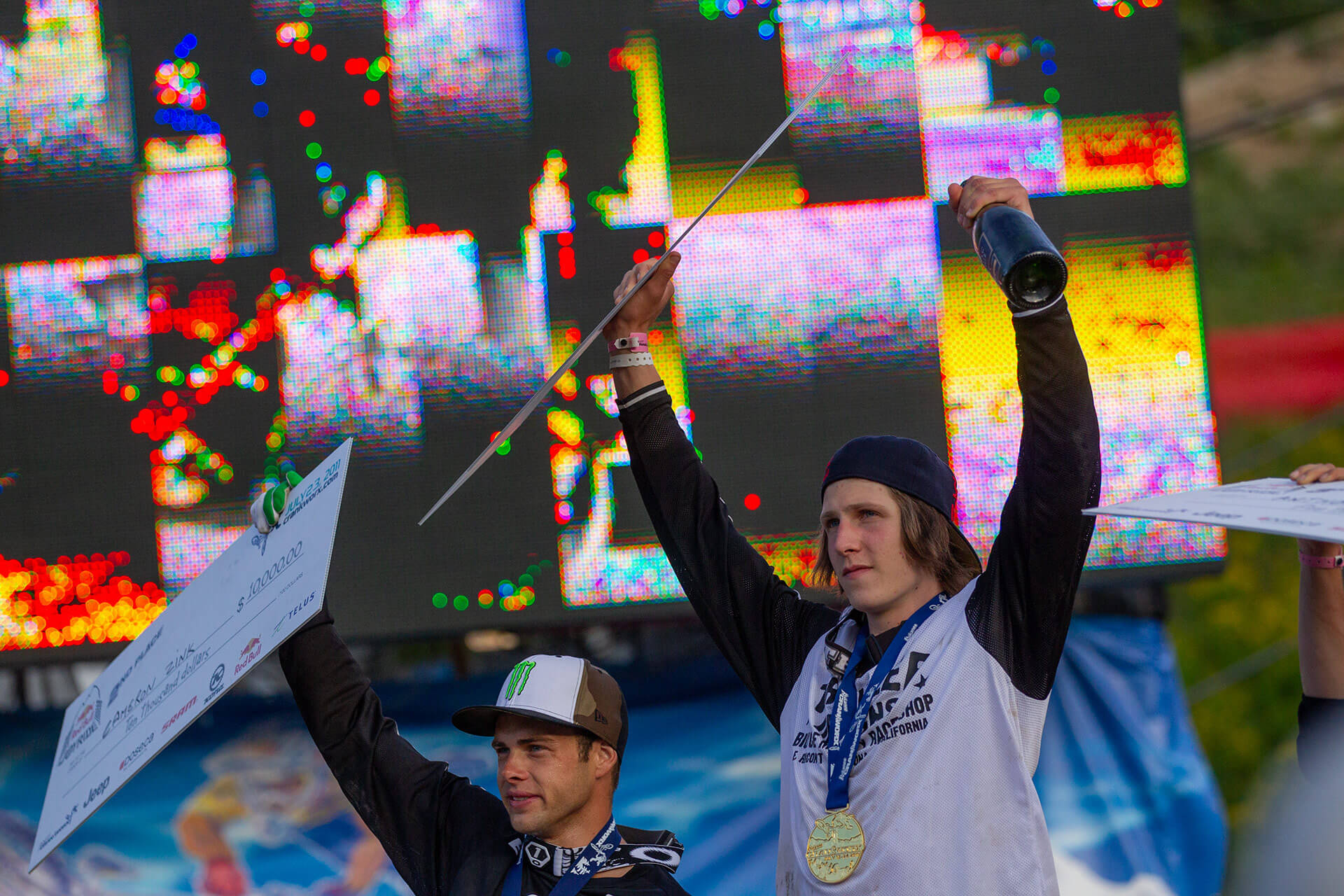
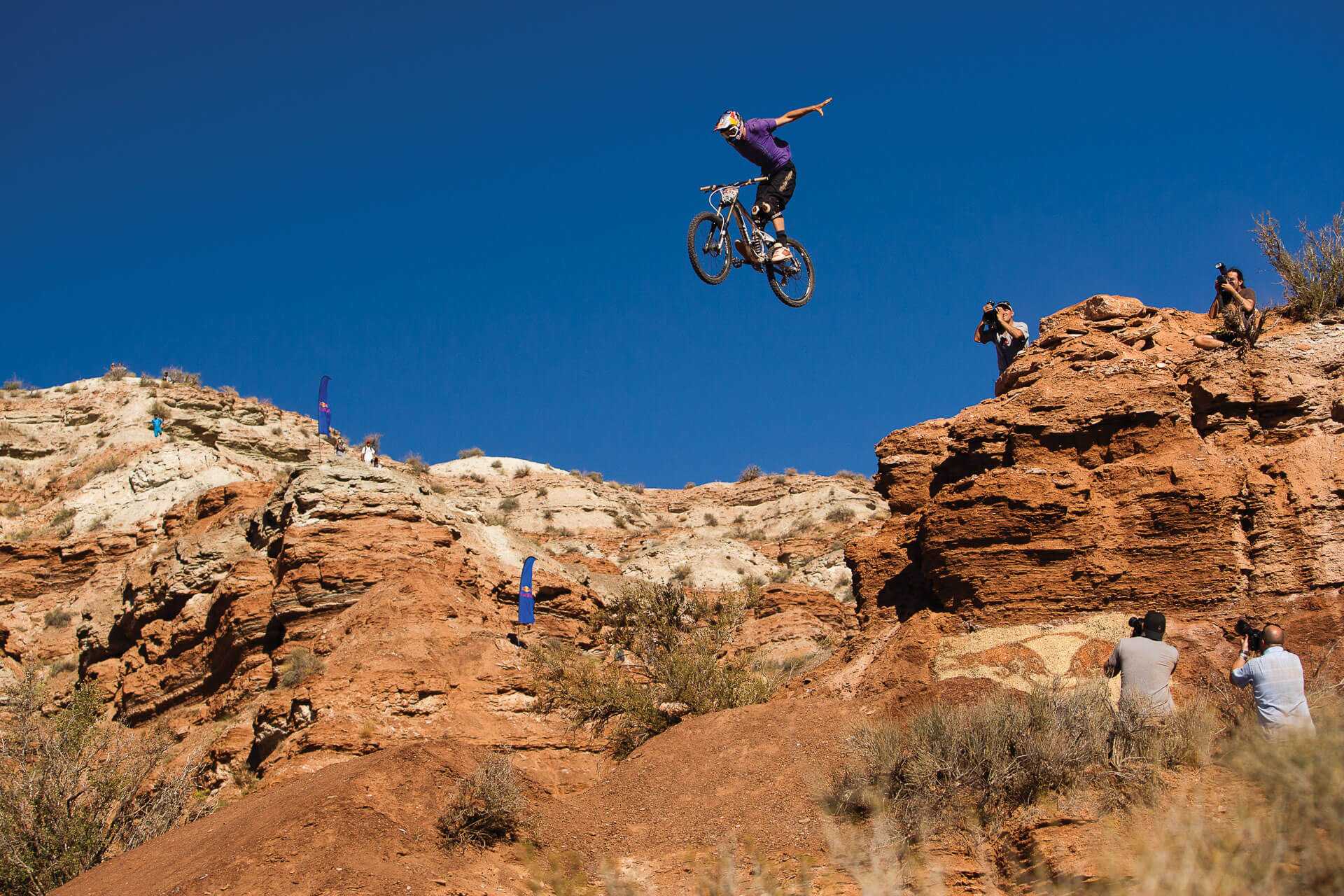
“I have so many concepts floating around that I want to bring to life,” says the unassuming 34-year-old, who bristles at the notion of being the G.O.A.T. “I’m just interested in continuing to progress myself.” - Brandon Semenuk
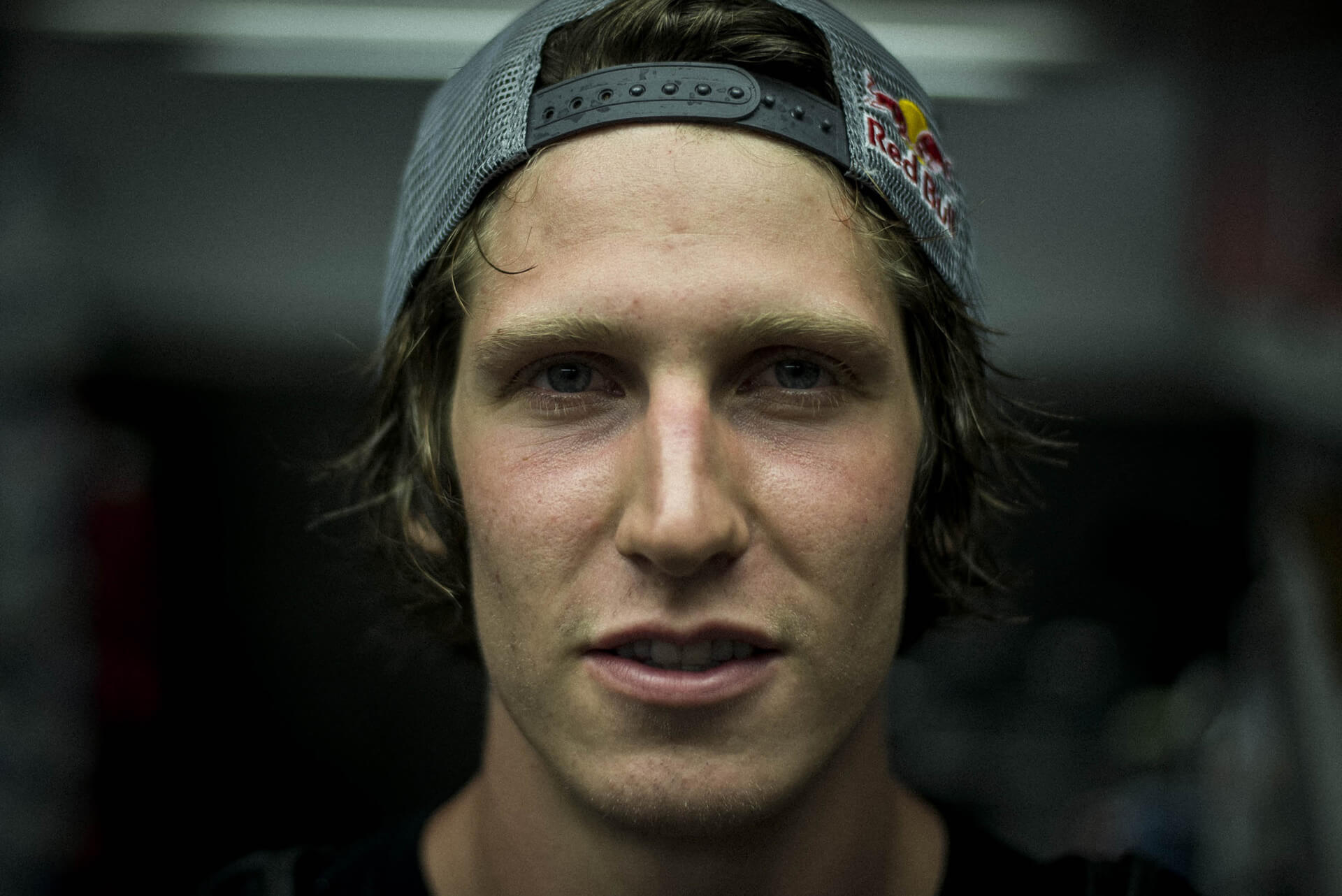
As impressive as his competitive pedigree is, Semenuk’s celluloid career is equally outstanding, if not more. He’s dazzled in scores of groundbreaking film segments and is self-producing an ever-growing archive of videos that continually push the envelope of artistic and athletic progression. He’s one of the most filmed mountain bikers in history, yet he always ensures that each new edit will result in the thunderous sound of several thousand jaws hitting the floor at the same time.
His path has been so prolific—with major contest wins and radical short films dropping like bombs annually—his 20-plus years as a fully sponsored professional seem to have flown by. While two decades of cutting-edge performances might portend the winter of most pro riders’ careers, Semenuk hasn’t even reached his peak—as evidenced by the fact that each new video he releases marks another milestone in mountain biking progression. With untold ideas and aspirations remaining, he’s not anywhere close to slowing down.
“I have so many concepts floating around that I want to bring to life,” says the unassuming 34-year-old, who bristles at the notion of being the G.O.A.T. “I’m just interested in continuing to progress myself.”
Semenuk’s insatiable desire for progression has been a defining factor since childhood, when he started riding bikes with his half-brother, Tyler West, seven years his senior and already an avid cross-country racer.
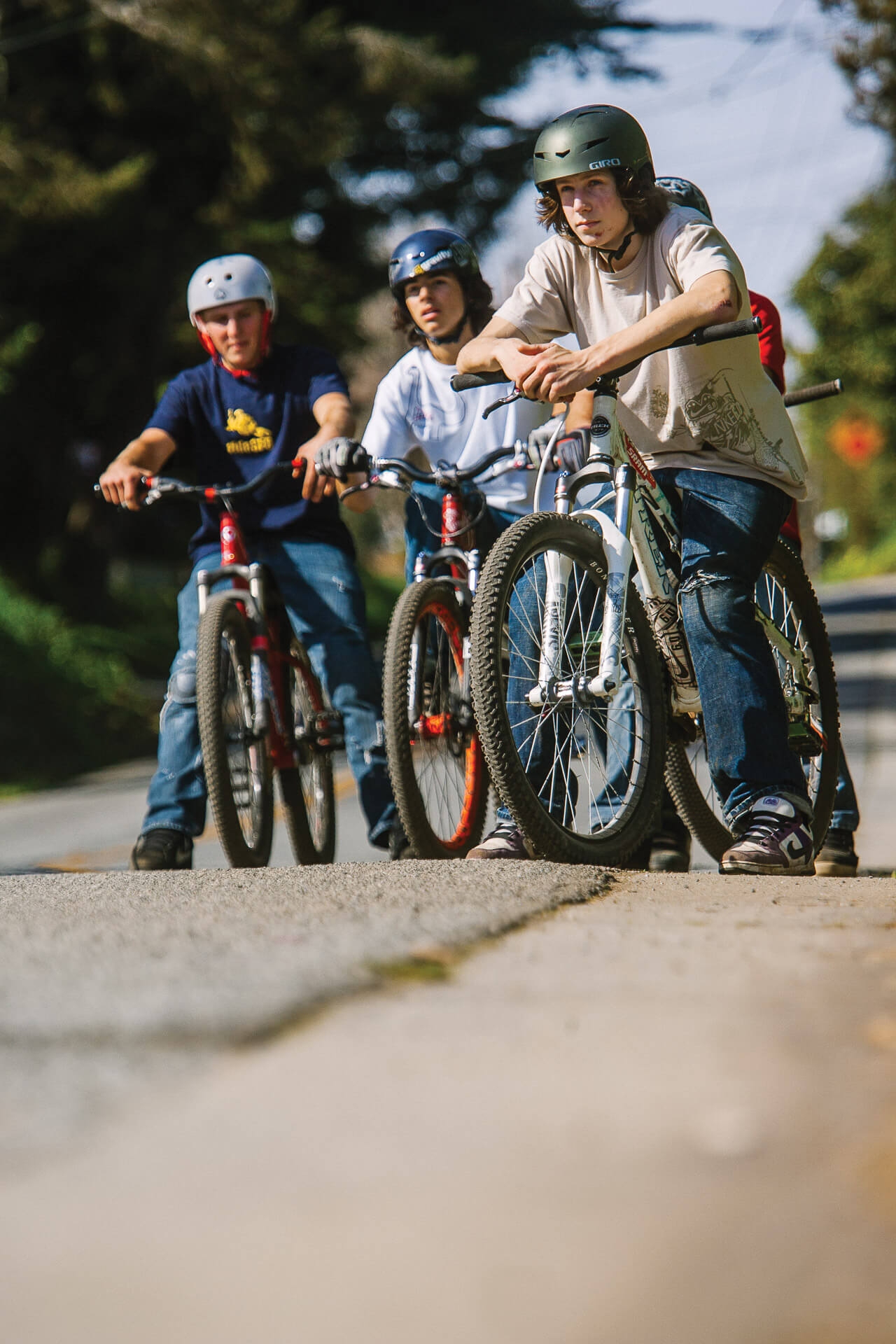
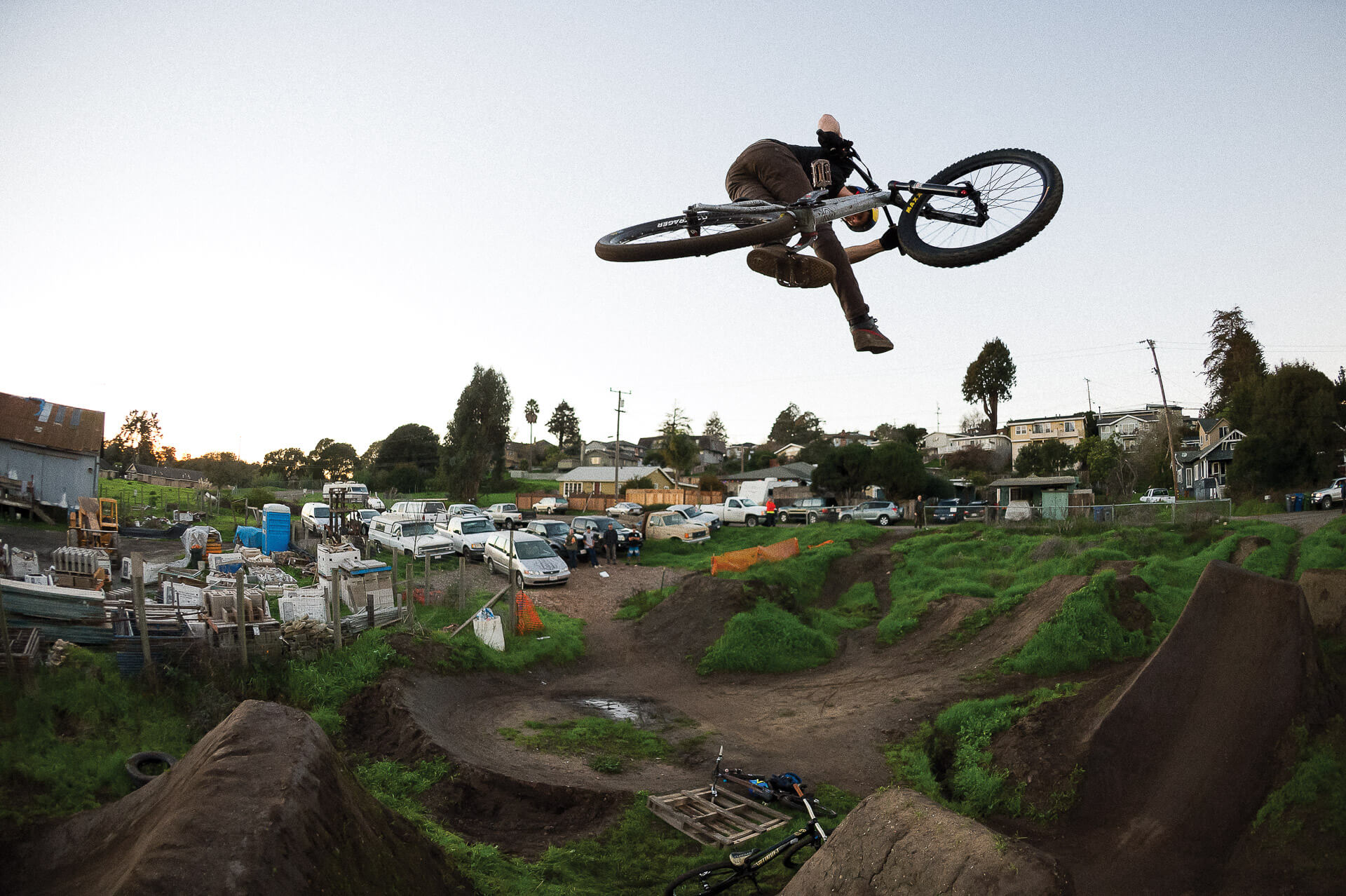
“We grew up in Whistler, a mecca for mountain biking, and there were XC trails everywhere,” Semenuk says. “We were always riding trails, and on the way back from the trails I’d stop by the dirt jumps and hit them on my XC bike. That’s how it all started.”
For the first several years, Semenuk raced cross country with his brother, first competing in the BC Cup at the age of 9. Already driven, by age 12 he’d won the Canadian under-14 cross-country title. Those who knew him at that time saw a determination and focus that set him apart from most other kids his age.
“I first met him when he was about 9, and he was a full XC grom,” says Tyler Morland, the global mountain bike marketing director for SRAM and RockShox, who became one of the first to sponsor Semenuk. “A bunch of us who worked at Evolution in Whistler were coming back from a huge Friday ride and were pedaling along the lake, when suddenly this skinny kid rides up and starts sprinting beside us. He was totally challenging us, and I was like ‘good for this kid.’ You could see how competitive he was, even as a grom.”
By the time Semenuk was 14, the monotony of cross-country racing began taking its toll and he decided to diversify his riding. He dropped out of high school and embarked on a home-schooling program that gave him the flexibility to ride every day. One afternoon he was sessioning the local dirt jumps when seminal freeride and downhill luminary Andrew Shandro, then the manager of what would become Trek Bicycles’ freeride-focused C3 Project, noticed him obsessively practicing tricks.
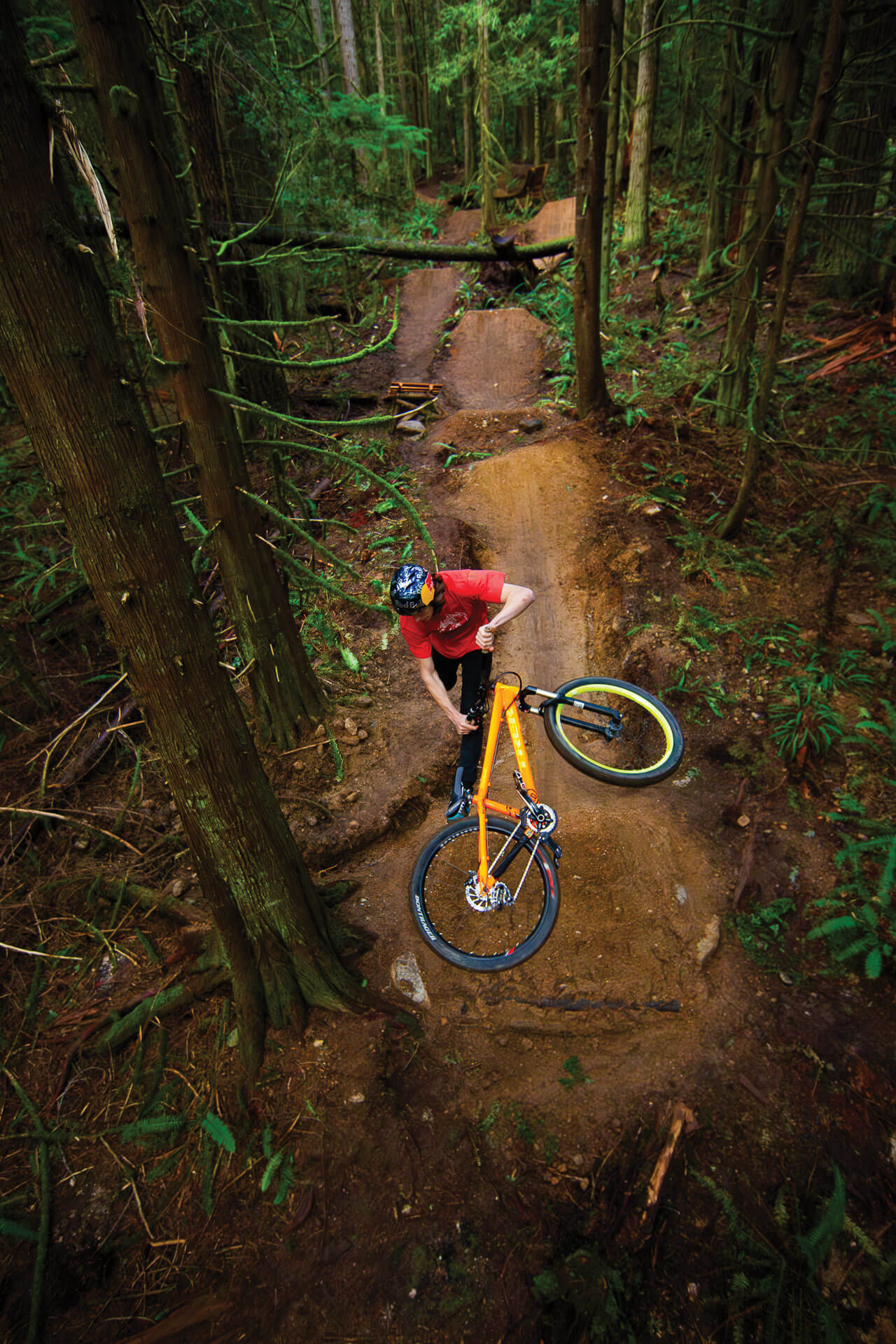
“I could immediately see there was just an absolute focus and commitment to get better and progress.” - Andrew Shandro
“I could immediately see there was just an absolute focus and commitment to get better and progress,” Shandro says, adding that he was won over when his 5-year-old son Ethan took a spill and Semenuk rushed over to help him up. “When I saw Brandon helping Ethan off the ground I thought, ‘this kid has a good heart.’”
Shandro quickly got to know Semenuk, and before long he lined up the promising young rider with some different Trek frames. This opened up new realms of possibility while also leading to a full-blown bike sponsorship that has held fast for 20 years—a rarity in mountain biking.
“I got a dirt jumper, then a downhill bike, and I was like, ‘this is cool, I can ride more aggressive terrain and take my riding to another level,’” Semenuk says. “And the sponsorships meant I could start traveling and competing in contests. It was never really about wanting to be a contest rider, though. It was more about being able to ride the event courses and progress my skills.”
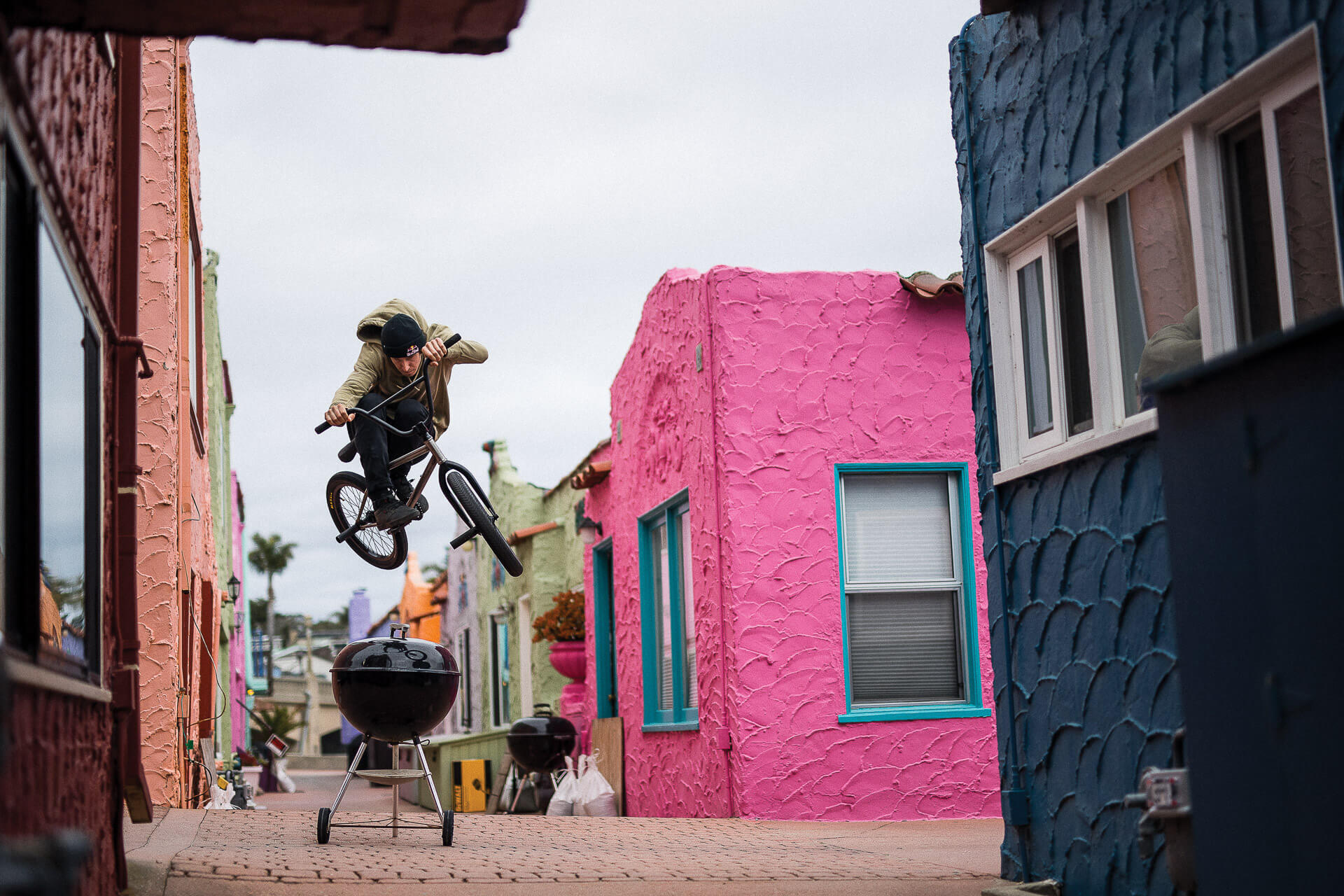
Armed with a quiver of bikes and travel budgets from SRAM, Trek, and Nike 6.0, at age 15 he began traveling to Europe for contests and spending winters in Aptos, California, home to the legendary Post Office Jumps that catapulted the careers of so many talented slopestylers. Riding and hanging out with the likes of Ryan “R-Dog” Howard and Cam McCaul—both fellow C3 Project teammates—helped Semenuk find a rhythm in which he could refine his style. It also meant he could ride bikes year-round.
At age 17, he was ready to tackle the intimidating Red Bull Rampage, bringing his versatile skillset to the sheer cliffs near Virgin, Utah—a venue venerated by the world’s most fearless freeriders. In his first-ever attempt, he won the competition outright, greasing a white-knuckle run with a deliberation that instantly raised the bar for freeriding progression and cemented his place in the sport’s upper echelon.
“In that moment, I knew that Rampage had changed,” Shandro says. “We had this young grom who was so calculated and so focused on his line, and we were seeing a new level of precision and approach. But it didn’t surprise me. I knew what he was capable of doing.”
Buoyed by his early success, Semenuk made another bold, forward-thinking move—one that other freeriders, let alone teenagers, wouldn’t have dared at the time. He moved from Whistler to British Columbia’s Sunshine Coast, where he bought a house and property that he could transform into his personal playground. He painstakingly manicured his yard into an elaborate slopestyle course filled with massive jumps, ramps, and an airbag—at one point even installing a rope-tow that would allow him to get to the top of his jump line more quickly.
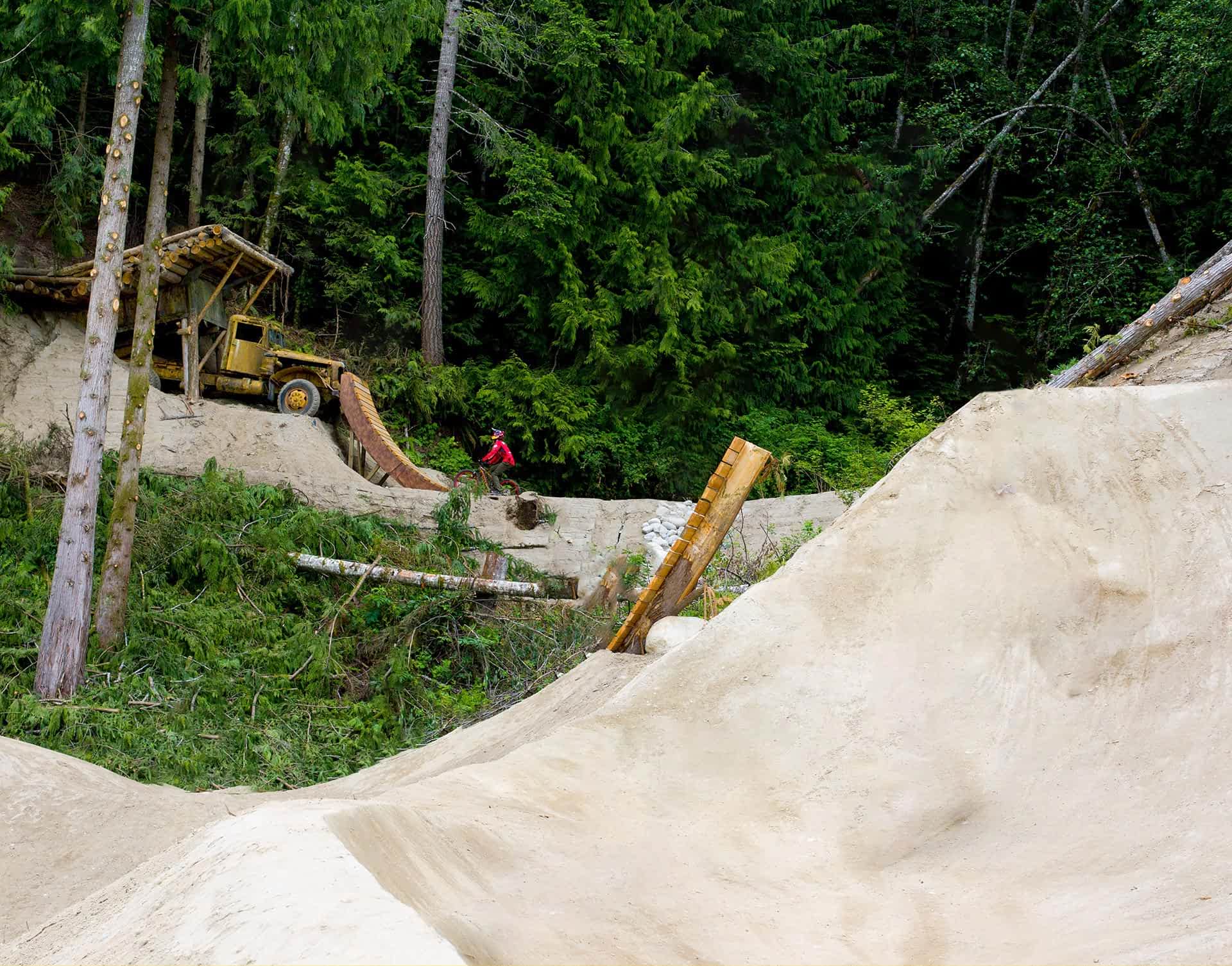
“It’s a sacred place, and he and his crew have put a lifetime of work into it. It’s a place where he can get away from everyone, where people won’t see what tricks he’s working on. Everything he needs to get better; he’s got it.” - Ryan “R-Dog” Howard
“I mean, who does that?” Morland says. “He wanted to get up the hill faster so he could get more runs in, so he put in a rope-tow. He understood that he needed to ride 12 months out of the year, so he built an indoor park. It shows his aptitude for continuous improvement is unique.”
Making a significant property investment at such a young age was a risky endeavor, but it paid off in spades. With a private sanctuary he could shape to meet ever-shifting needs, Semenuk was able to experiment, perfecting tricks and sequences that only people in his inner circle could see.
“It’s a sacred place, and he and his crew have put a lifetime of work into it,” says teammate and close friend Howard, who spends much of each summer on the compound, riding and digging with Semenuk. “It’s a place where he can get away from everyone, where people won’t see what tricks he’s working on. Everything he needs to get better; he’s got it.”

As such, with each passing year, the biggest contests have been more about successfully executing his intricate vision than beating his competitors.
“He pushes the boundaries so much,” says photographer Sterling Lorence, who captured myriad iconic moments with Semenuk during his formative period. “Each year, whether it’s Rampage or Joyride, all the riders, all the diggers, all the judges, and all the fans are just waiting in total silence to see what he’s gonna do. He has a plan, and it’s all or nothing.”
In this sense, Semenuk has mostly been “competing with himself”—a phrase that has been uttered by many of the world’s top riders to describe his most game-changing efforts. Though the general public has come to expect this from each new contest or video, those closest to him see this phenomenon play out on a regular basis.
“All these people see these polished tricks and think it just comes easy, but I see him fail almost daily,” Howard says. “But he’s relentless, and he’ll keep after something new until he learns it. Then he’ll do it another 17 times in a row until he has it in the bag.”
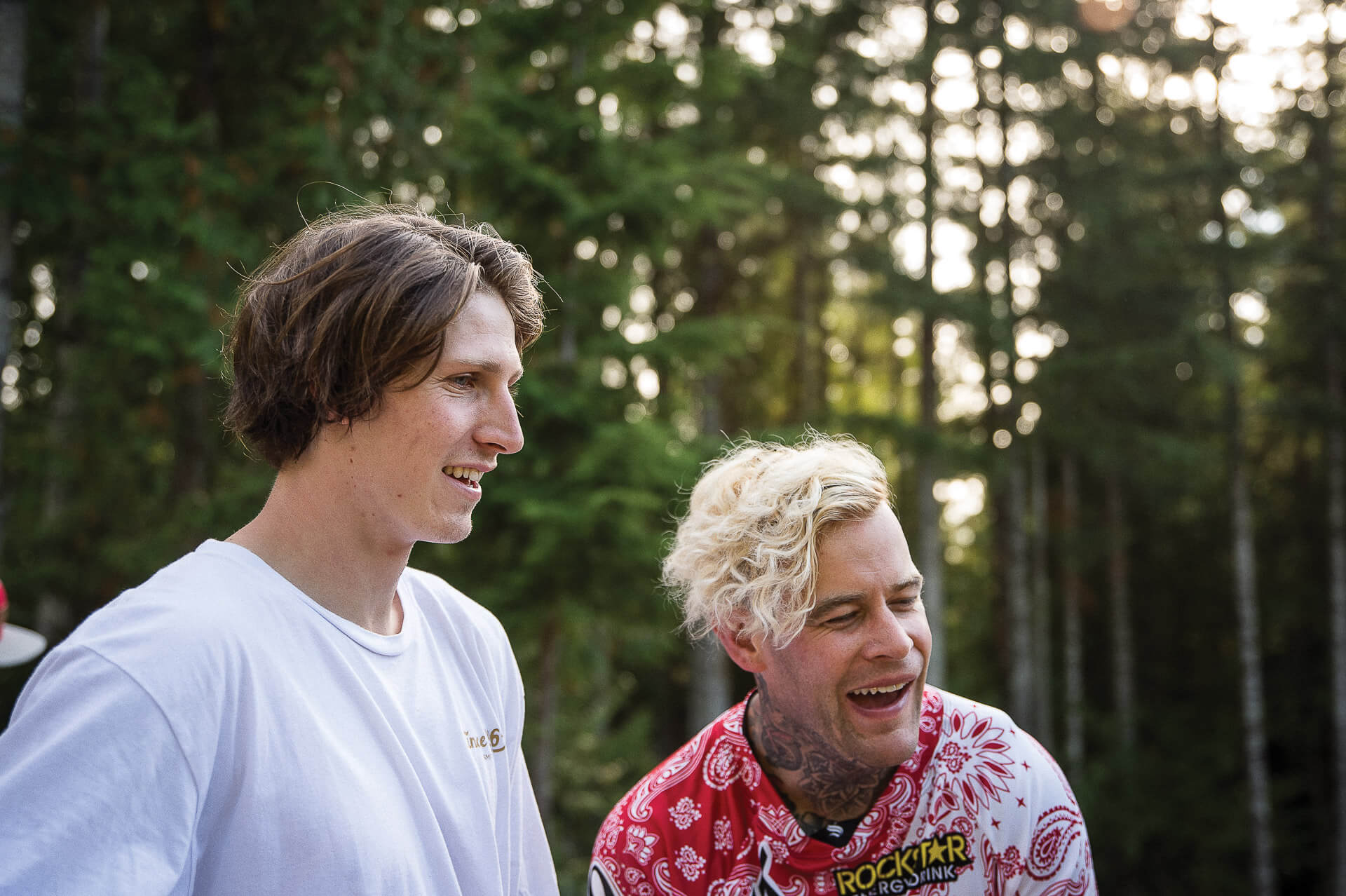
“He pushes the boundaries so much. Each year, whether it’s Rampage or Joyride, all the riders, all the diggers, all the judges, and all the fans are just waiting in total silence to see what he’s gonna do. He has a plan, and it’s all or nothing.” - Sterling Lorence
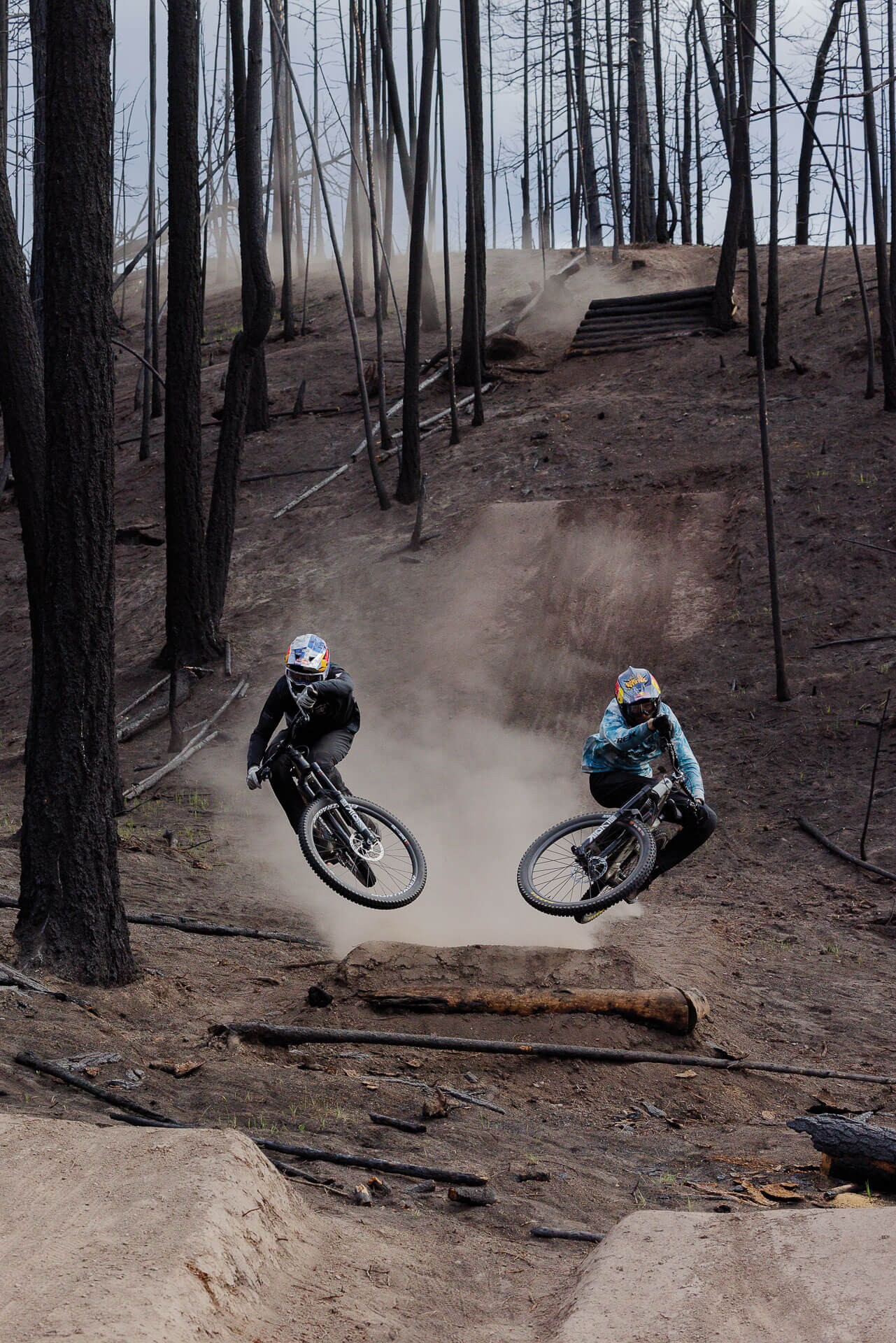
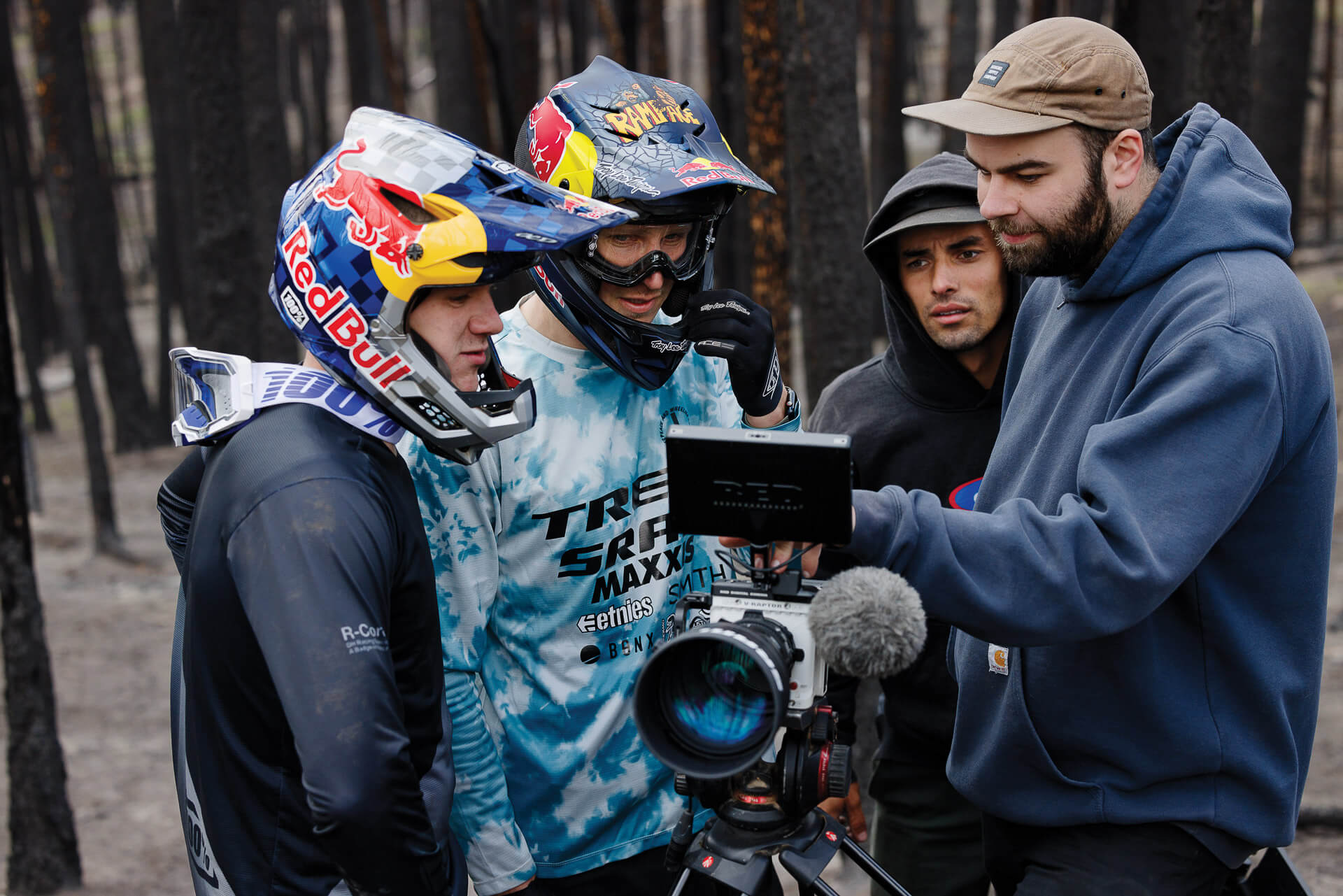
This persistence and desire for perfection also permeates Semenuk’s approach to filmmaking, which he’s been doing in-house for more than a decade. Though he's featured in standout segments from the New World Disorder series to some of Anthill Films’ finest productions, forming his own company has been essential to challenging himself on both athletic and creative levels.
When he founded Revel Co in 2015 with influential filmmaker Rupert Walker, it not only freed him from the need to constantly travel for FMB World Tour events, but it unleashed a multi-year torrent of unbridled expression for the two. Walker’s inimitable filming and editing, at once explosive and surreal, was a magical complement to Semenuk’s uncanny knack for molding landscapes to bring his plans to fruition.
“It was just this perfect storm, and the creative juices were really flowing,” Semenuk says. “We didn’t really care what other people thought. We just wanted to elevate what we were doing and get these ideas out of our heads.”
“His ability to start with some messy piece of land and turn it into a masterpiece of sculpted features and trails is something I’ve never seen from any other rider I’ve worked with.” - Rupert Walker

For Walker, Semenuk’s talent for envisioning the natural “film sets” that could accentuate the complicated sequences he wanted to link together was almost as crucial as the riding itself.
“His ability to start with some messy piece of land and turn it into a masterpiece of sculpted features and trails is something I’ve never seen from any other rider I’ve worked with,” Walker says. “It was these insane builds that allowed us to create things that people had never seen before.”
Given the essentiality of trails to mountain biking itself, the importance of trailbuilding to Semenuk’s filmmaking could be viewed as self-evident. But it’s about much more than just function: To him, it’s a key elixir in the alchemy of producing gold.

“It’s just such a special part of what I get to do,” Semenuk says. “We’re getting to build in these places that may never see mountain bike tires again. And I’m so fortunate to have super talented builders around me who are such close friends. This could never happen without them.”
At the core of his crew are Evan “The Intern” Young, Justin Wyper, and Kane Boyce, all accomplished builders with harmonizing skills that can address the nuances of each project—including most of Semenuk’s spine-chilling Rampage lines. Young, also known as “Inti,” has worked closely with Semenuk since 2011, digging for most of his film shoots and 11 of the 12 Rampages in which he’s competed. Until recently, he even lived in Semenuk’s house, giving him privileged insight into the rider’s structured routines: Even down to the fact that Semenuk religiously drinks tea three times a day, with his preferred brand being Taylors Yorkshire Gold.
“Brandon is always 150 to 200 percent input with everything he does, and it makes me want to do the same,” Young says. “When we’re on a shoot or at a contest, he takes care of everything we need. He’s creating great jobs for us and always making sure that we’re all living comfortably. And it makes me want to go out there and work harder than anyone else on the hill.”
“All of these guys are just so skilled and hardworking, and if they’ve built something and I can’t land the trick, I don’t want to let them down after they’ve put in so much work to make it happen.” - Brandon Semenuk

To this end, Semenuk is effectively the producer of his projects: finding and scouting locations; getting land-use approvals and filming permits; assembling his teams; managing budgets and making sure everyone is well-paid and well-fed; concepting each build and digging alongside the crew; and ultimately, of course, riding each feature until he’s reached the rigorous standard he’s set for himself.
“He manages every project tightly and in a very personal way, even down to details like keeping gas in the [excavation] machines,” says photographer Ian Collins, who has worked on dozens of shoots with Semenuk and landed six major magazine covers with him. “On top of all that, in terms of taking care of his friends and paying invoices and expenses in a timely manner, he does a better job than any company I’ve ever worked with.”
When it comes to the technical aspects of photography and filming, Semenuk is typically involved from start to finish, scoping out optimal lighting situations and suggesting angles, techniques, and even the equipment that might best convey the concepts in his mind.
“We’ll be shooting, and he’ll be like, ‘this shot could be totally sick with a 14-mil, or a 35-mil,’” says Isaac “Wally” Wallen, who has been Semenuk’s primary videographer since 2020. “For the first project I ever shot with him, he actually bought me a Red camera. It’s unbelievable how he’s perfected the craft of being a creative mountain biker.”
Though Semenuk has high expectations of his crews, by all accounts he places the most pressure on himself—especially when it comes to consummating tricks on features they’ve dutifully built for his exacting purposes. There are stories of him trying for hours to land an unprecedented move, crashing over and over, only to get up each time and try again. If the feat hadn’t been accomplished by sundown, dinner might be a quiet affair, but he’d be up early the next morning to finally stomp it.
“Sometimes I wonder if I’m ruining the experience for somebody else,” Semenuk says. “All of these guys are just so skilled and hardworking, and if they’ve built something and I can’t land the trick, I don’t want to let them down after they’ve put in so much work to make it happen.”
One of the most compelling displays of Semenuk’s commitment to his builders came during the 2024 Rampage, when sustained winds threatened to scupper a second run for the contestants. Despite a three-hour delay and only a marginal decrease in the wind, he stood undaunted atop the towering mesa, calmly eyeing the fluttering windsocks for a window to make a final attempt at the line they had lovingly crafted for him. One sudden gust could have spelled disaster, but he chose his moment and executed a breathtaking run that earned him his fifth Rampage win.
“He didn’t have to take that risk,” says Young, who along with Wyper had spent days toiling in the desert heat to hone his line. “I don’t think he was even overly focused on winning. He’d seen us out there stacking a 15-foot-tall wall, and I think he just wanted to honor our effort. That meant the world to me.”
“Rally is like mountain biking on steroids. Financially it’s challenging. Timewise it’s challenging. And, like mountain biking, there’s so much that goes into it. It’s a sport that I could do every day and still be content.” - Brandon Semenuk
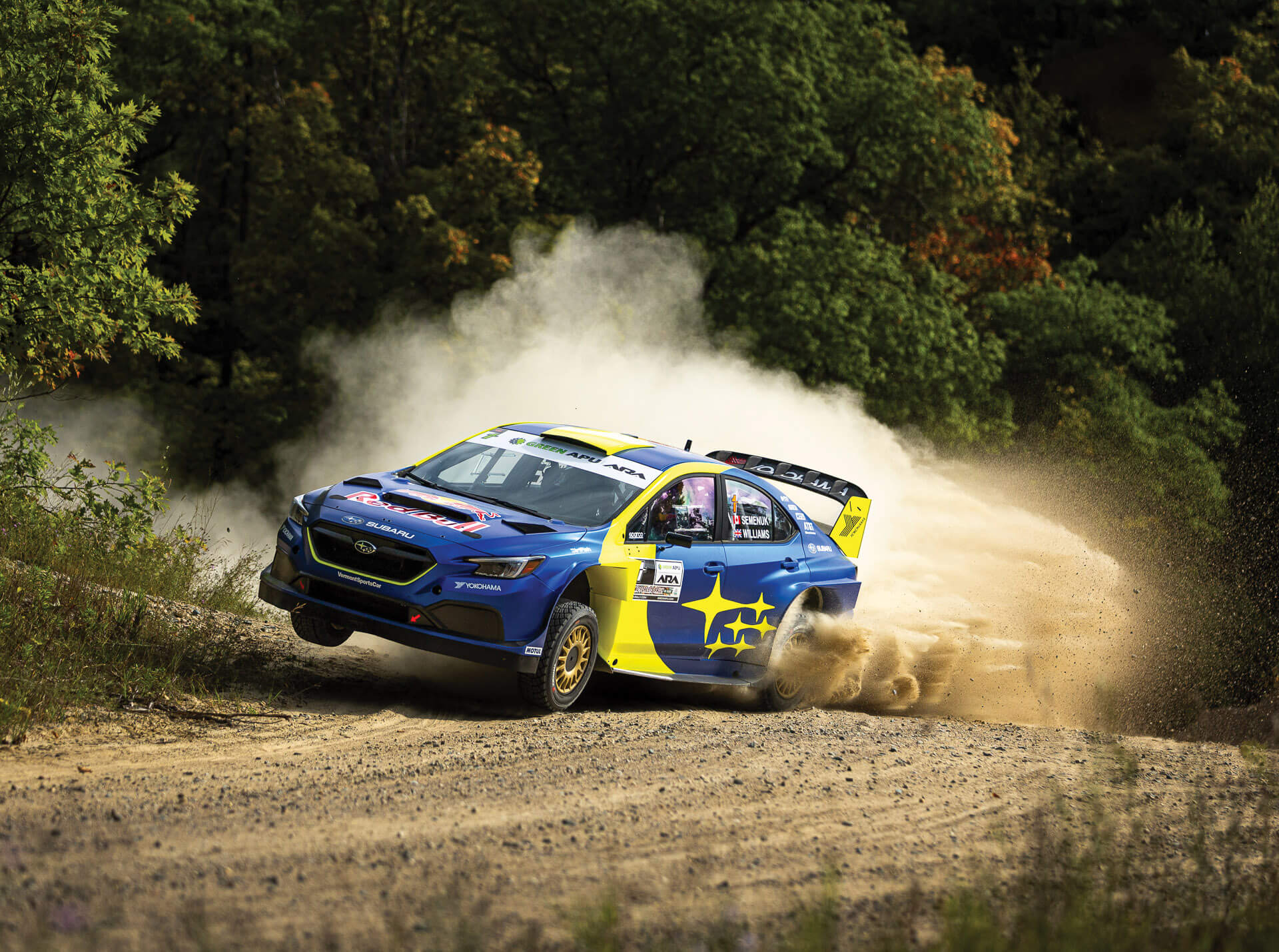
What makes Semenuk’s fifth Rampage victory all the more unbelievable is the fact that it came less than a month after he’d achieved another landmark in his simultaneous career of professional rally car racing—a grueling motorsport that demands not only skill, catlike reflexes, and endurance, but also countless hours of meticulous preparation. Just weeks before staring down the vertigo-inducing chutes of Utah’s high desert, Semenuk had been railing through the treacherous stages of an American Rally Association (ARA) racecourse with his co-driver, Englishman Keaton Williams, on their way to sewing up their third straight ARA National Championship long before the racing season had even concluded.
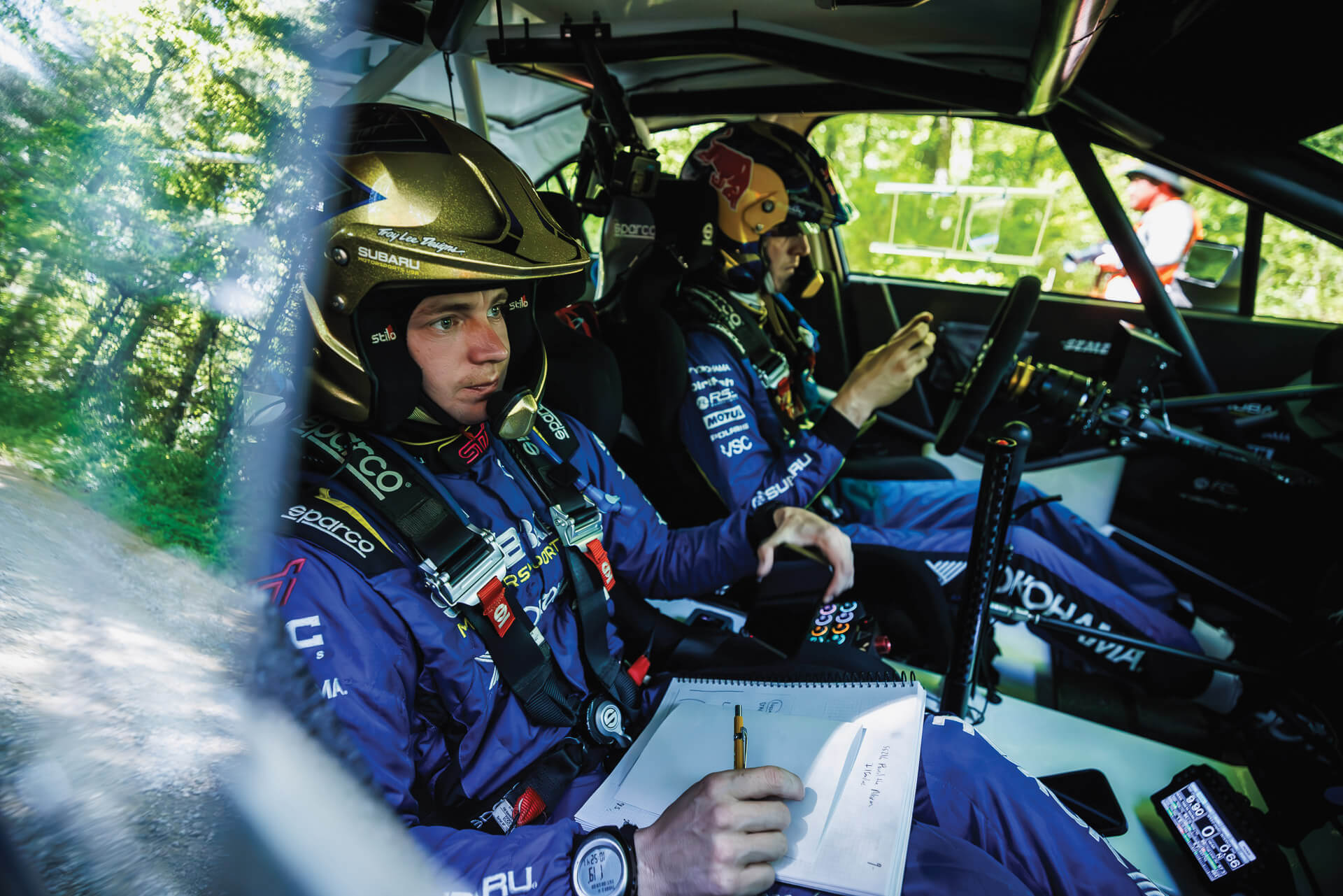
“I don’t think anything like this has ever been done before,” says co-driver Williams, who raced on the FIA World Rally Championship tour before teaming up with Semenuk to dominate the American national series. “The level of focus and inner determination it takes to race at this level is already more than most could handle, yet Brandon is balancing all this with film shoots and keeping his bike riding to the point where he’s still winning Rampage.”
While Semenuk undoubtedly has a special gift for high-consequence extreme sports, Williams says this is just the baseline for success in rally car racing, which requires weeks of exacting preparation with pace notes for any given course.
“The pace notes are a really complex system, and Brandon is a unique personality in terms of his attention to detail,” Williams says. “Some drivers are fine with basing their pace system off just the direction of corners and their speed, but Brandon is always looking for more detailed information so he can find the quickest line. He’s always thinking, ‘what can I do in the next 24 hours to better prepare myself.’”
Those close to Semenuk say working on these pace notes is a nightly regimen—even after long days of trailbuilding, riding, and filming on location.
“I’ve never known anyone with a work ethic like Brandon,” photographer Collins says. “When we’re on a shoot, he’s not just riding over and over until everything is perfect. He’s picking up a shovel and digging as hard as the next guy. And at the end of the day, when the rest of us just want to wind down, we can hear him banging around on the rally simulator or doing his pace notes until 2 in the morning. He just doesn’t slow down.”
Williams believes that Semenuk’s eye for detail and thirst for precision are common denominators to his parallel success in mountain biking and rally racing, arguing that they give him the qualified confidence to put it all on the line when the stakes are high.
“We’ve been at races where he’s even done test runs at almost race pace,” Williams says. “In his mindset, it’s all or nothing. He’s either in or he’s out. If he can do a test run at race pace, then he can risk a little more come race time. And once the helmet is on and the race starts, it’s like a switch just flicks. But it’s calculated. There’s no arrogance or ego to it.”
For his part, Semenuk says rally racing helps satisfy his need to continually evolve.
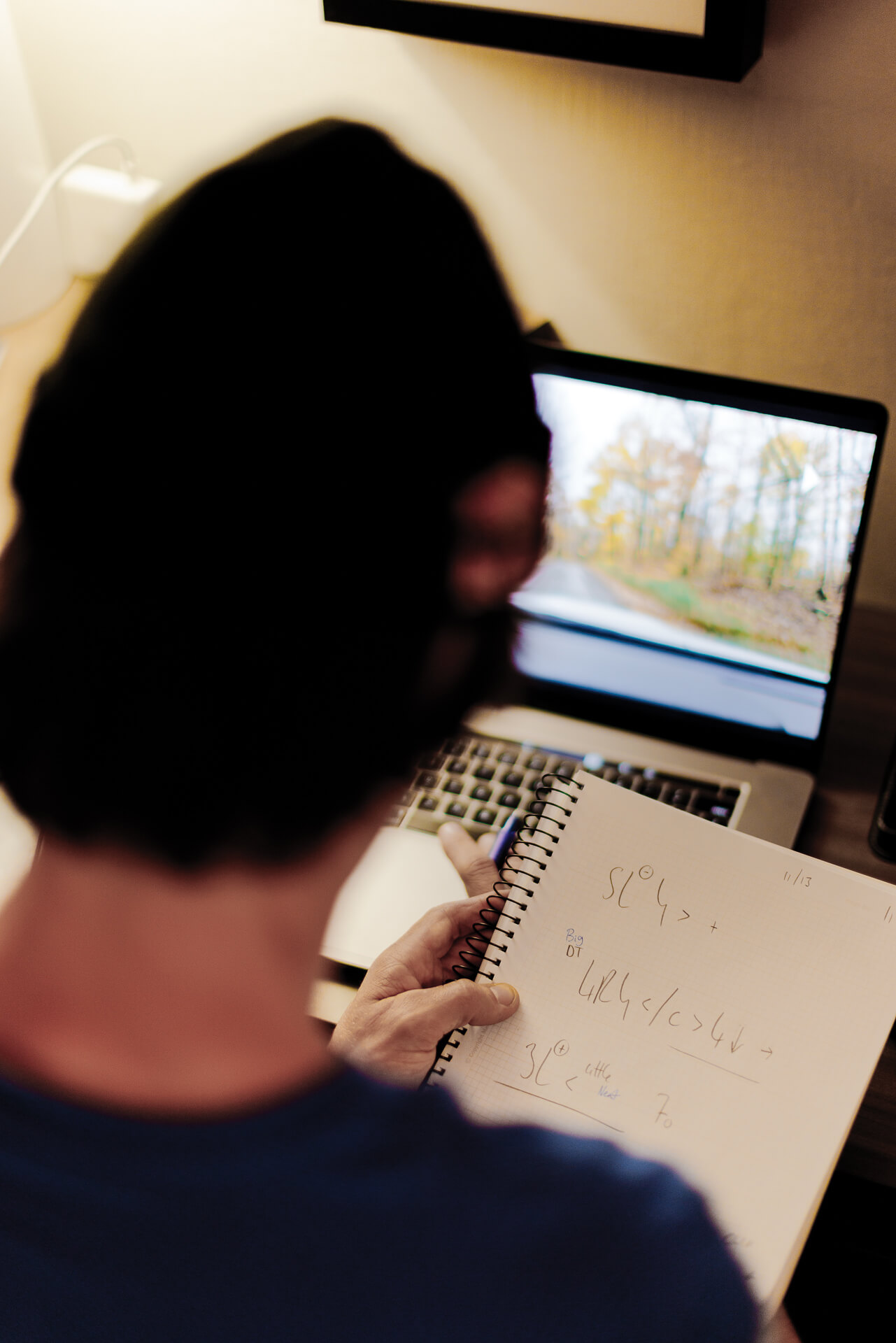
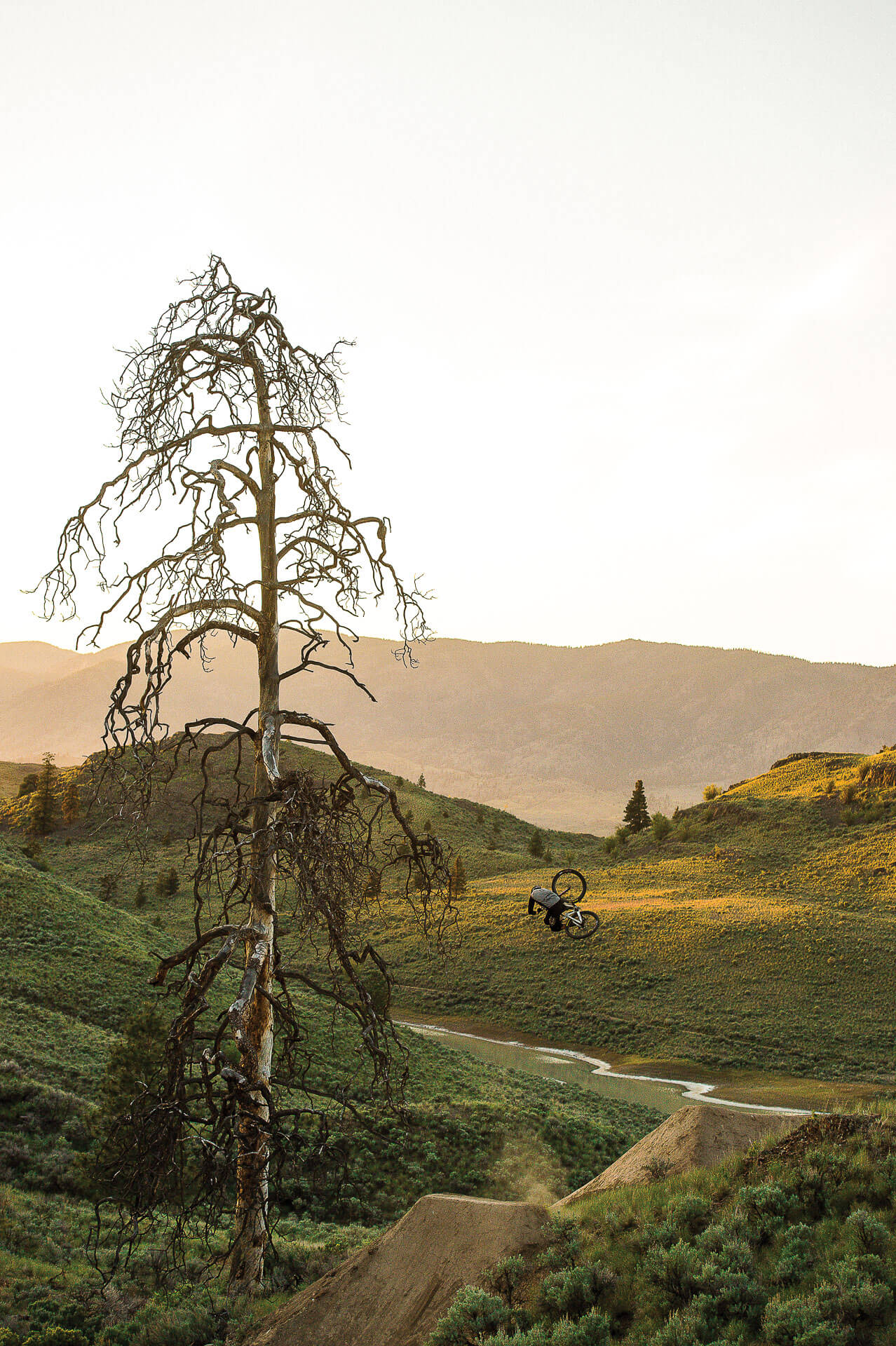
“Rally is like mountain biking on steroids,” he says. “Financially it’s challenging. Timewise it’s challenging. And, like mountain biking, there’s so much that goes into it. It’s a sport that I could do every day and still be content.”
While rally racing brings contentment to Semenuk in the moment, he and Williams are far from resting on their laurels. With their Subaru Motorsports USA sponsorship well-secured, the three-time ARA champions are already setting themselves up for more success this year. The duo has won the first three races of the 2025 ARA season, putting them comfortably in first place as of mid-April. This, despite a crash in the third race that caused them to lose their lead of more than 3 minutes. After spending 3.5 minutes inspecting a smashed right bumper and refastening their hood—which had flipped up, restricting their vision—Semenuk registered an untouchable time through the powerstage to win his fourth straight Olympus Rally in Washington by only 6.9 seconds.
“I was blown away by his pace,” Williams says. “It was like now or never, and he just went for it. He’s only been driving professionally for six years, so who knows where he’s going to be in the next five years?”
